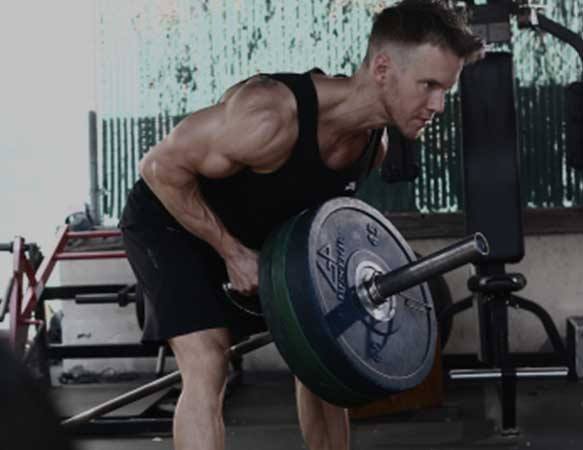Four exercises to help strengthen and protect your lower back
June 15, 2018
You may not see your lower back, but it’s always there working hard for you. From getting out of bed in the morning, to assisting you in more exercises than you’re probably aware of.
By devoting several exercises to your lower back (as shown within this workout, or by including 1 or 2 within your usual back routine), you’ll not only be doing yourself a favor by preventing many issues that may arise from having weak lower back muscles, but you’ll also quickly find that many of your larger primary exercises (squats, deadlifts, rows, shoulder presses, and even the bench press), will improve. This is what happens when you take a more complete and overall approach to training, as opposed to simply focusing on a specific particular muscle group of region. I train every muscle over the period of a week or ten days, even though my main focus may be elsewhere, I will still commit to at least several exercises per muscle group within each full training cycle. I haven’t always done this, and I feel stronger and more complete since having adopted this approach.

← Have You Seen This?
In need of an extra boost to your training? Check out my free Abs Guide, and Ultra Lean Nutrition Manual
Why Hyperextensions?
The primary muscles within the lower back is the Erector Spinae, or spinal erectors, which are a set of muscles that straighten and rotate the back. Whilst they are involved in numerous exercises, one of the simplest to work them is a hyperextension – a back extension involving these muscles to pull the upper torso upwards and in alignment with the lower half of the body. The same can also be said for a reverse hyperextension, whereby the upper body is fixed, and the legs are raised up instead. Both exercises directly work these muscles with the least resistance (although weight can be added). If you’re not currently performing one of these movements at least once a week, then you should. (I’ll often include hyperextensions within my morning abs routine, as it also provides a great stretch in my core and abdominal region).
Why Deadlifts?
The Deadlift is a pretty obvious choice when it comes to the lower back, yet surprisingly it’s still an exercise I see massively underused in most gyms. Sure, many may look at this as a powerlifting move, and not want to get too involved in such a movement when their primary goal may be to tone up and feel fit and healthy, but it shouldn’t be looked at in this way.
Good technique is definitely required to reap the benefits of deadlifting, as well as ensuring proper technique and using safe form, but it doesn’t even require you to use much weight. Just the movement alone (with some resistance besides the barbell itself), will help you strengthen the lower back. It’s another case of – if you’re not currently performing the deadlift at least once a week, then you should do whats necessary to include it within your weekly routine.

Take It Down To The Floor
If the thought of deadlifting and reverse hyperextensions makes you feel a little uneasy about including them within your training, then don’t force them, and certainly don’t give up on trying to perfect their technique. You can start by simply laying face-down on the floor and raising your shoulders and heels off the floor at the same time. Once you’ve mastered this movement, try extending both arms out in front of you (as though you’re Superman flying through the air), and repeating the same movement – raising your straight arms and heels off the floor at the same time. Overtime, this will help strengthen your lower back muscles, as well as build up some assurance towards trying the other exercises previously mentioned.

Exercise 1
HYPEREXTENSIONS (WEIGHTED)
3 sets of 15-10 reps
Exercise 2
DEADLIFTS
4 sets of 12,10,10,8 reps
Exercise 3
REVERSE HYPEREXTENSIONS
3 sets of 15-10 reps
Exercise 4
V-BAR ROWS
3 sets of 12-10 reps

